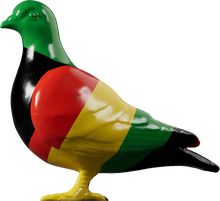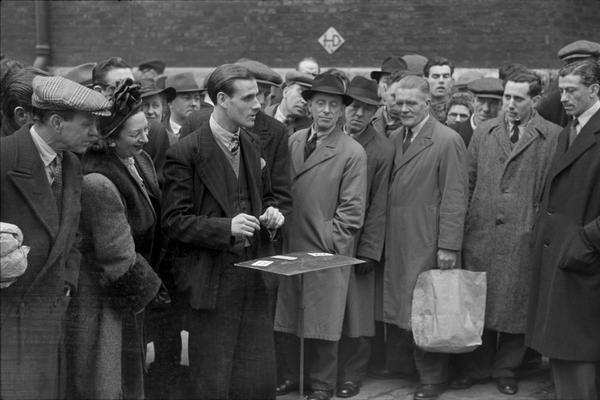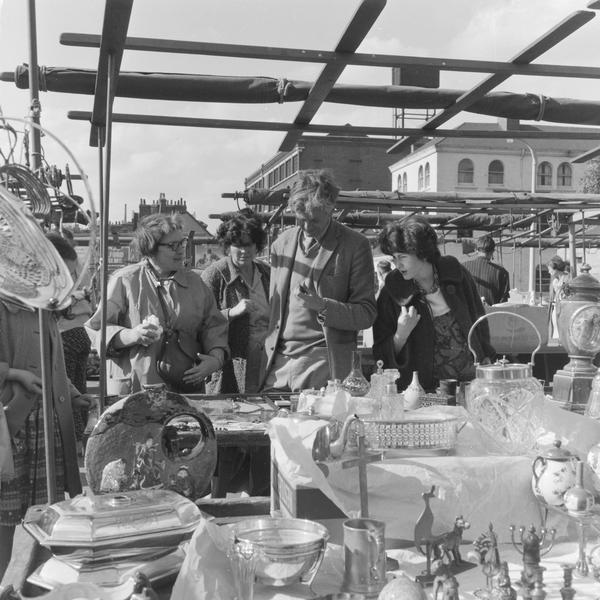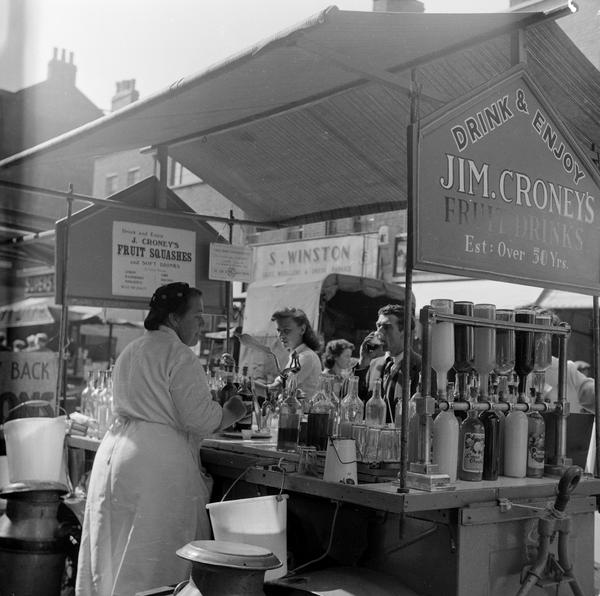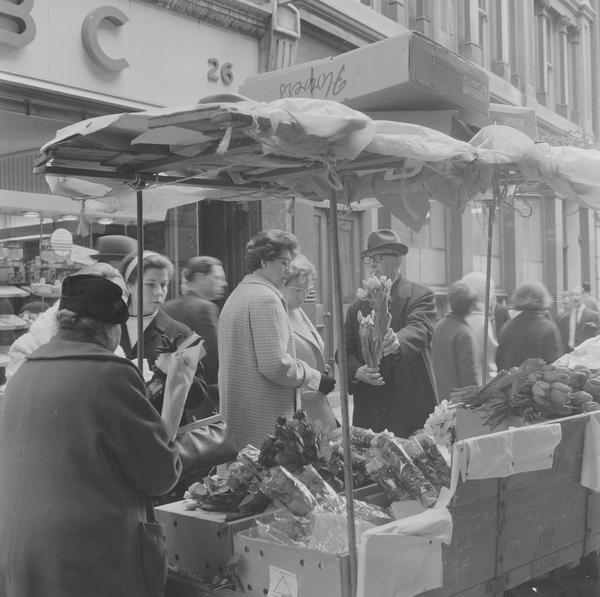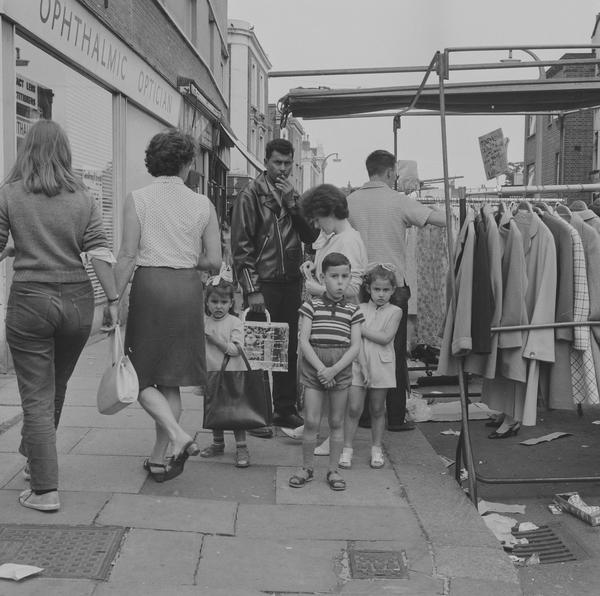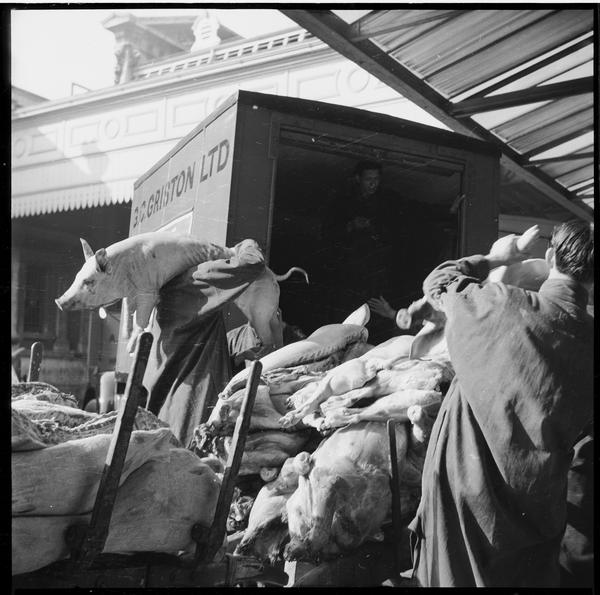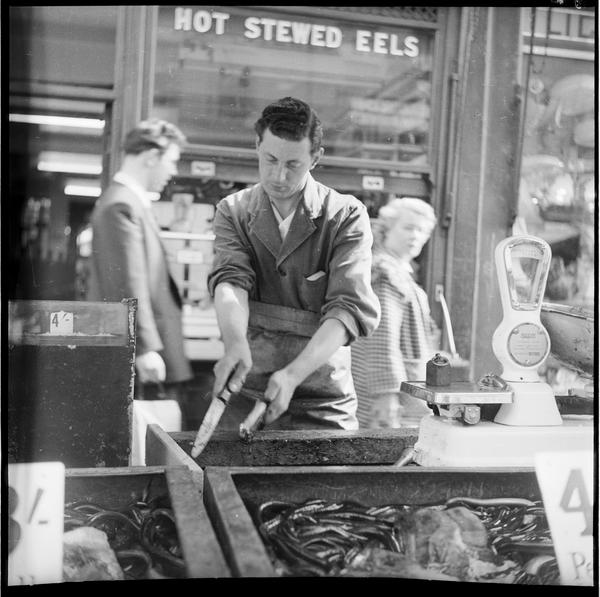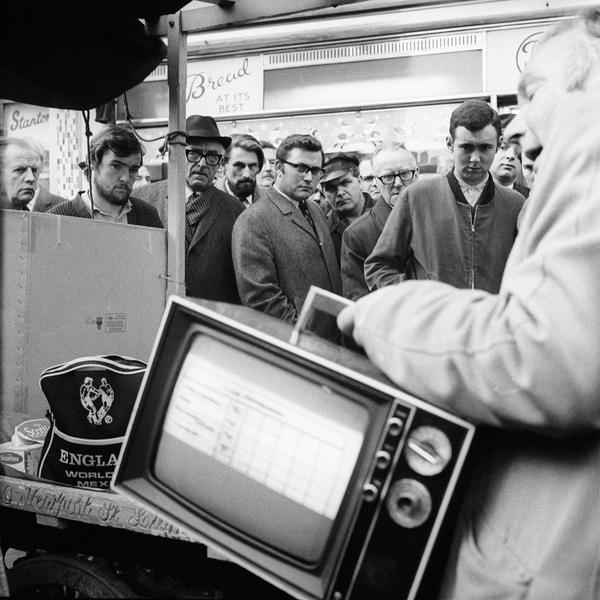London markets photographed by Henry Grant
Though many have disappeared over time, London still has dozens of markets. Between the 1950s and 1970s, Henry Grant captured many of them – getting up close to the traders, and those in search of a bargain.
Across London
1950–1980

The Cut, Waterloo
Grant’s photos often take the perspective of the seller, giving us a fascinating view of the people who came to buy that day. This trader is flogging a TV at a street market in Lower Marsh, Waterloo in 1970.

Petticoat Lane Market, Spitalfields
Petticoat Lane Market is a second-hand clothes and goods market which has been held on this site in the East End every Sunday since the 1700s. The road was originally named Petticoat Lane, but became Middlesex Street in the 1830s. Here, Grant captures a spontaneous moment with his usual skill.

Chapel Street Market, Islington
These two were visiting the market in 1972, almost a hundred years after it was established in 1879. John James Sainsbury opened the first Sainsbury's branch on this street in 1882, and in this photo, you can spot a now-extinct Woolworths in the background.

Club Row, Spitalfields
Grant often took photographs between assignments for Fleet Street publishers. Some time around 1950, he photographed the Sunday pet and livestock market at Club Row. The woman is considering whether to buy a puppy – but this lively East End market also sold birds and fish.

Portobello Market, Notting Hill
“Portobello Road, Portobello Road, street where the riches of ages are stowed”. These lyrics, from Disney’s 1971 children’s musical Bedknobs and Broomsticks, tell you what you need to know about Portobello Market. It’s London’s most famous antiques market, and is still hugely popular today.

Rathbone Street, Newham
Not all of London’s street markets were so formal. On this day in 1959, as on every market day, pitches were set up along Rathbone Street in Newham. Many were just groundsheets, piled high with goods. At Rathbone Street the array of items on sale included both clothes and live eels.

Covent Garden Market
Until 1974, Covent Garden was London’s main flower, fruit and vegetable market. This was a covered, more formal marketplace, similar to Smithfield for meat, or Billingsgate for fish. The market – probably London’s best known – was constructed in stages between 1828 and 1904. It’s now home to shops and restaurants.

